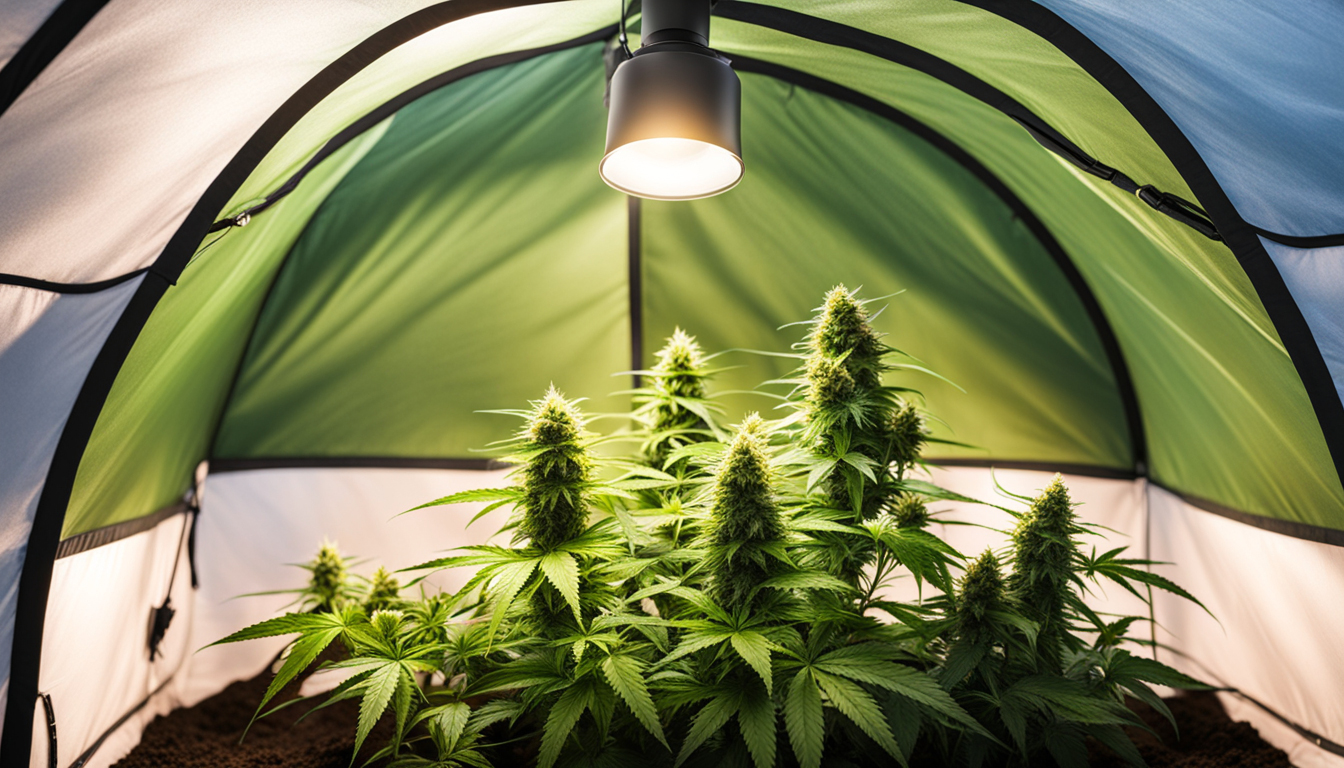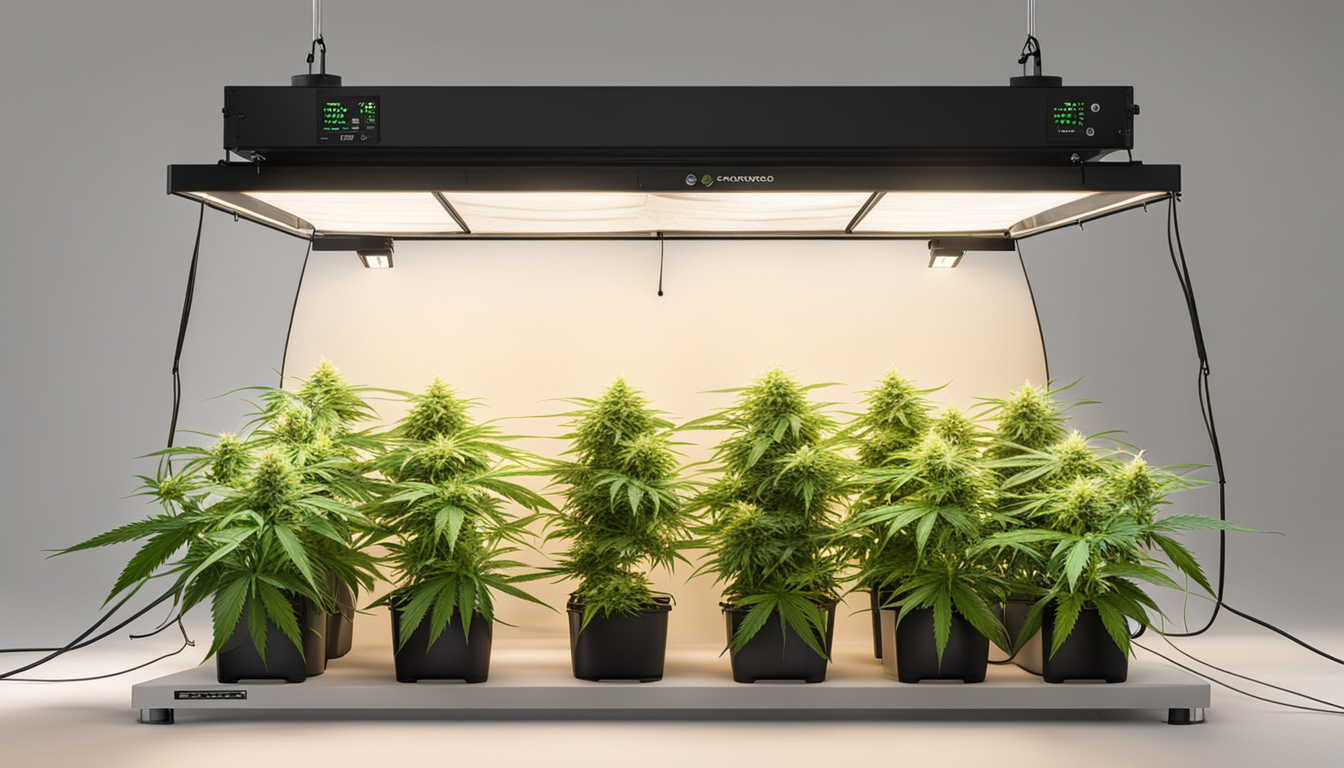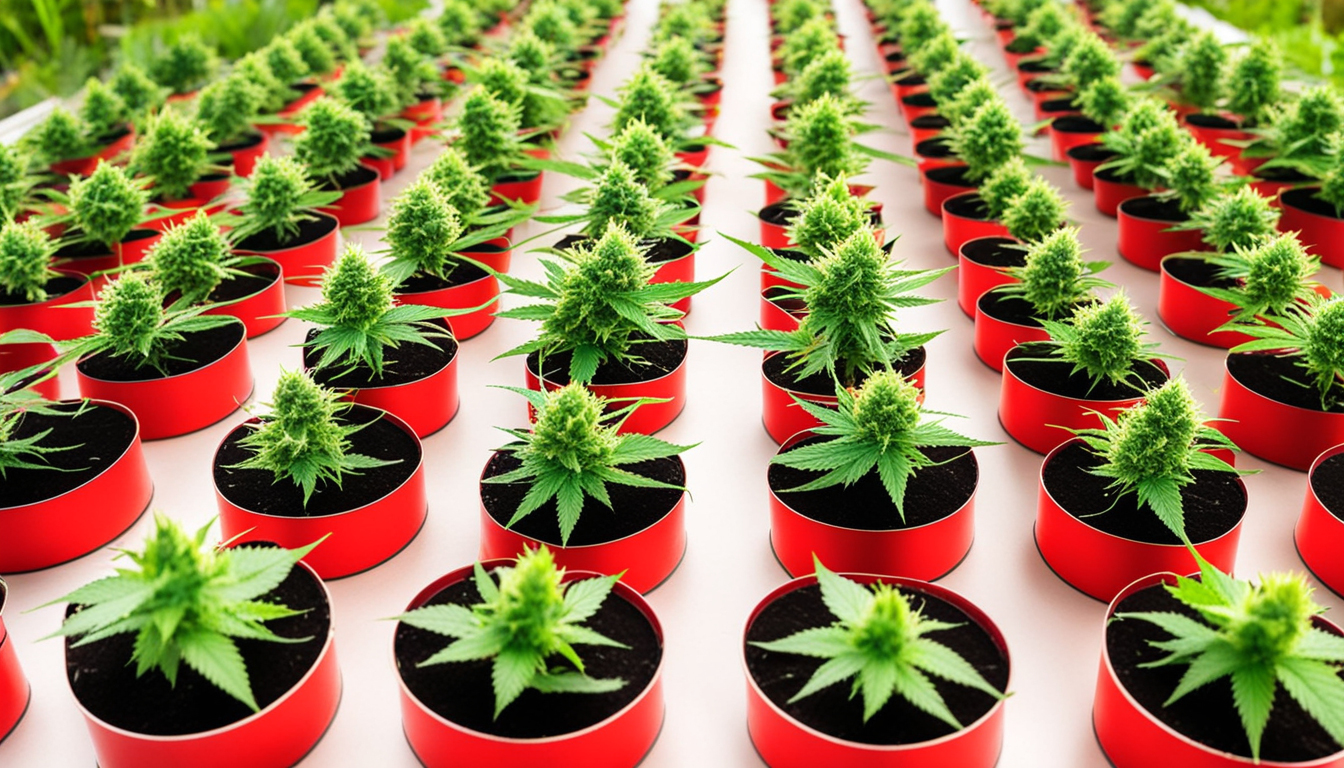
Whether you're just starting out with marijuana growing or looking to improve your existing crop, following this complete guide will help you produce big, high-quality yields right at home. With the right gear, methods, and care, growing weed indoors can be an extremely satisfying and cost-effective endeavor.
Choosing Weed Strains
The first step in planning your indoor grow is picking the right cannabis strains to grow. The three main types of weed plants each have their own characteristics.
Sativas
Known for their energizing mental effects, these strains spread tall and slender with narrow leaves. They flourish in hotter tropical climates and have a longer blooming time between 2.5-3 months indoors. Top energizing strains include Sour Diesel, Durban Poison, and Jack Herer.
Indicas
These strains provide calming body-focused effects and grow short and bushy with broad leaves. Adapted to cooler mountain climates, they bloom faster within 2-2.25 months. Popular indica strains include Northern Lights, Bubba Kush, and Bubba Kush.
Mixed strains
Hybrid strains mix traits from both energizing strains and indicas. They offer combined effects and have medium flowering periods around 9-10 weeks. Popular mixes are Blue Dream, OG Kush, and Blue Dream.

Setting Up Your Grow Space
Cannabis plants need the right controlled environment to thrive. Key factors for indoor grows are lights, ventilation, layout, and finding the ideal discreet area.
Location
Choose an empty space with easy access to irrigation and electrical outlets. An empty extra bedroom, unused closet, corner of the basement, or grow tent tucked away in a garage all make great stealthy cultivation room spots.
Lights
Cannabis requires powerful light for all growth stages. LEDs are energy-efficient and come in broad spectrum options mimicking real sunlight. Provide 15-25 watts per sq. ft for the vegetative stage and 400-600 watts per square foot for flowering.
Airflow
Proper airflow and exhaust systems keep ideal temperature, moisture, and fresh CO2 levels. Install silent 10-15 cm fans or scrubbers to refresh old air and eliminate smells.
Layout
Maximize your space by arranging plants carefully under the lights and allowing room to access and work around them. Set up distinct zones for vegetation, bloom, curing, and cloning.

Growing Mediums
Marijuana can be grown in different substrates, each with benefits and cons. Pick a appropriate option for your specific setup and growing style.
Soil
The classic substrate, soil is affordable and easy for beginners. It provides excellent taste but needs more irrigation and nutrients to feed plants. Amend soil with perlite or coco to improve drainage.
Coco Coir
Made from coir, renewable coco coir retains water but still allows air to the roots. It's cleaner and more consistent than soil. Use coir-specific fertilizers to prevent accumulation.
Water systems
In water systems, plant roots develop right in fertilizer irrigation solution. This enables quick development but needs close monitoring of water chemistry. Deep water culture and drip systems are common techniques.
Germinating Seeds
Sprouting prepares your marijuana seeds to start growing radicles. This readies them for transplanting into their cultivation medium.
Towel Method
Put seeds between wet paper towel and maintain them damp. Inspect after 2-7 days for emerging taproots indicating germination is complete.
Direct Planting
Plant seeds directly into pre-moistened growing medium 1⁄4 inch deep. Gently water and wait 1-2 weeks until seedlings break through the top.
Cubic rockwool
Soak cubic rockwool starters in pH-adjusted water. Place seeds 6mm deep into the cubes. Donate Here Keep cubes wet until seedlings emerge within 1-14 days.
Transplanting Young plants
Once germinated, marijuana young plants need to be repotted to avoid overcrowding. Move them into appropriately sized containers.
Preparing Containers
Fill final pots with cultivation medium amended with slow-release nutrients. Let pots to soak up water for 8-12 hours before transplanting.
Carefully Transplanting
Gently separate seedling roots from sprouting medium using a spade. Put into pre-soaked container at same depth as before and gently water in.
Growth Stage
The vegetative stage promotes leafy growth and plant form through 3/4 to full day of daily light exposure. This stage usually lasts 4-8 weeks.
Providing 3/4 to full day of Lighting
Use grow lights on a 24 hour cycle or natural sunlight to trigger nonstop growth. Lamp intensity influences size and internodal spacing.
Nutrients
Use grow stage fertilizers higher in nitrogen. Make sure pH stays around 5.8-6.3 for proper nutrient absorption. Fertilize 25-50% strength after 2 weeks and increase slowly.
LST and topping
Topping, low stress training, and trellising direct growth patterns for flat canopies. This increases yields.

Flowering Stage
The blooming stage develops buds as plants reveal their sex under a 12/12 cycle schedule. It lasts 2-3 months depending on variety.
Switching to 12/12
Switch lamps to 12 hours on, 12 hours off or place outdoors for natural 12 hour cycle. This triggers plants to begin flowering.
Flushing
Flushing flushes out nutrient salts to enhance flavor. Feed weakly the first period then just use pH'd water the final 2 weeks.
Flushing
Maintain 12 hour photoperiod but flush using pH-balanced water only. Return to plain watering if buds aren't yet mature after two weeks.
Harvesting
Recognizing when cannabis is completely mature ensures peak cannabinoid content and aroma. Cut down plants at peak ripeness.
Signs of readiness
Look for fading pistils, swelling calyxes, and 5-15% amber trichomes. Check buds across the plant as they don't all mature evenly.
Cutting Plants
Use sterilized, razor-sharp pruning shears to gently cut each plant at the base. Leave 5-10cm of stem attached.
Curing
Hang intact plants or branches upside down in a lightless room with average temperature and RH around 50-60% for 1-2 weeks.
Curing
Curing continues drying while improving the buds like fine wine. This process mellows harshness and further develops terpene and terpene profiles.
Jars and Humidity
Manicure dried buds from branches and place into glass jars, packing about 3⁄4 full. Use a sensor to measure jar moisture.
Burping Daily
Open containers for a few hours daily to gradually lower humidity. Rehydrate buds if humidity goes under 55%.
Long term storage
After 2-3 weeks when humidity levels off around 55-65%, do a final trim and keep long-term in sealed jars.
Troubleshooting
Even seasoned growers run into various pot plant problems. Identify issues soon and address them properly to keep a vibrant garden.
Nutrient Deficiencies
Yellowing leaves often signify inadequate nitrogen. Purpling stems and leaves show low phosphorus. Test pH and increase nutrients slowly.
Pests
Thrips, aphids, fungus gnats, thrips, and root aphids are frequent pot pests. Use neem oil sprays, predator bugs, and yellow traps for organic control.
Powdery mildew
High humidity encourages powdery mildew and root rot. Increase circulation and venting while reducing humidity under 50% during bloom.

Summary
With this complete indoor cannabis cultivation guide, you now have the knowledge to grow plentiful potent buds for personal grows. Apply these techniques and methods during the seed starting, vegetative, and flowering stages. Invest in quality equipment and carefully check on your plants. In time, you'll be compensated with frosty aromatic buds you raised yourself under the patient guidance of your green hands. Good luck cultivating!